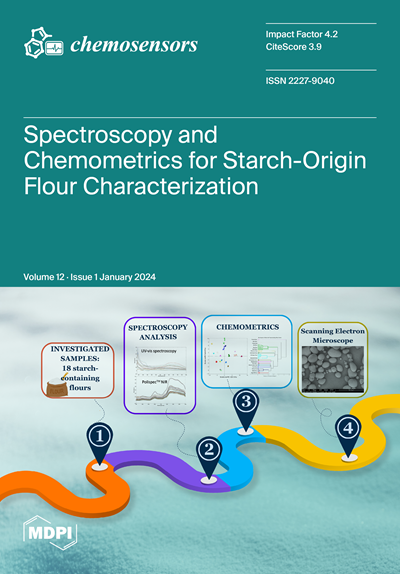A Selective Fluorescent Optode for Lead(II) Based on the Dansylamidopropyl Pendant Arm Derivative of 1,4-dioxa-7,13-dithia-10-Azacyclopentadecane ([15]aneNS2O2)
IF 3.7
3区 工程技术
Q2 CHEMISTRY, ANALYTICAL
引用次数: 0
Abstract
In this study, a novel highly sensitive and selective fluorescent optode membrane aimed at the determination of Pb(II) ion is proposed by incorporating N-(3-(1,4-dioxa-7,13-dithia-10-azacyclopentadecan-10-yl)propyl)-5-(dimethylamino)naphthalene-1-sulfonamide (L) as fluoroionophore in polyvinyl chloride (PVC) containing 2-nitrophenyl octylether (NPOE) as a plasticizer. In addition to high stability and reproducibility, the proposed optosensor showed a unique selectivity toward Pb(II) ion, with a wide linear range of molar concentrations (1.0 × 10−9–1.0 × 10−3 M) and a low detection limit of 7.5 × 10−10 M in solution at pH 5.0. The formation constants of the Pb(II) complexes with the fluoroionophore were evaluated by fitting the fluorescence data with a nonlinear least-squares curve-fitting program, and further information about the structures of the complexes were evaluated based on hybrid-DFT calculations. The optosensor exhibited a fast response time of less than three min, being easily regenerated by exposure to a solution of dithiothreitol. The sensor was applied to the determination of Pb(II) in real samples (canned tuna fish), and it provided satisfactory results comparable to those obtained via atomic absorption spectrometry (AAS).基于 1,4-二氧杂-7,13-二硫杂-10-氮杂环十五烷([15]aneNS2O2)的丹酰胺丙基悬臂衍生物的铅(II)选择性荧光光电管
本研究以N-(3-(1,4-二氧杂甲-7,13-二硫-10-氮杂环戊烷-10-基)丙基)-5-(二甲氨基)萘-1-磺酰胺(L)为荧光离子载体,在含2-硝基苯辛基醚(NPOE)的聚氯乙烯(PVC)中作为增塑剂,制备了一种用于测定铅(II)离子的高灵敏度、高选择性荧光光电膜。除了高稳定性和重复性外,该光传感器对Pb(II)离子具有独特的选择性,其摩尔浓度线性范围宽(1.0 × 10−9 ~ 1.0 × 10−3 M),在pH 5.0的溶液中检测限低至7.5 × 10−10 M。利用非线性最小二乘曲线拟合程序对荧光数据进行拟合,确定了含氟离子载体的Pb(II)配合物的形成常数,并基于混合dft计算进一步确定了配合物的结构信息。该光传感器具有小于3 min的快速响应时间,并且易于暴露于二硫苏糖醇溶液中再生。将该传感器应用于实际样品(金枪鱼罐头)中Pb(II)的测定,结果与原子吸收光谱法(AAS)相当。
本文章由计算机程序翻译,如有差异,请以英文原文为准。
求助全文
约1分钟内获得全文
求助全文
来源期刊

Chemosensors
Chemistry-Analytical Chemistry
CiteScore
5.00
自引率
9.50%
发文量
450
审稿时长
11 weeks
期刊介绍:
Chemosensors (ISSN 2227-9040; CODEN: CHEMO9) is an international, scientific, open access journal on the science and technology of chemical sensors published quarterly online by MDPI.The journal is indexed in Scopus, SCIE (Web of Science), CAPlus / SciFinder, Inspec, Engineering Village and other databases.
 求助内容:
求助内容: 应助结果提醒方式:
应助结果提醒方式:


